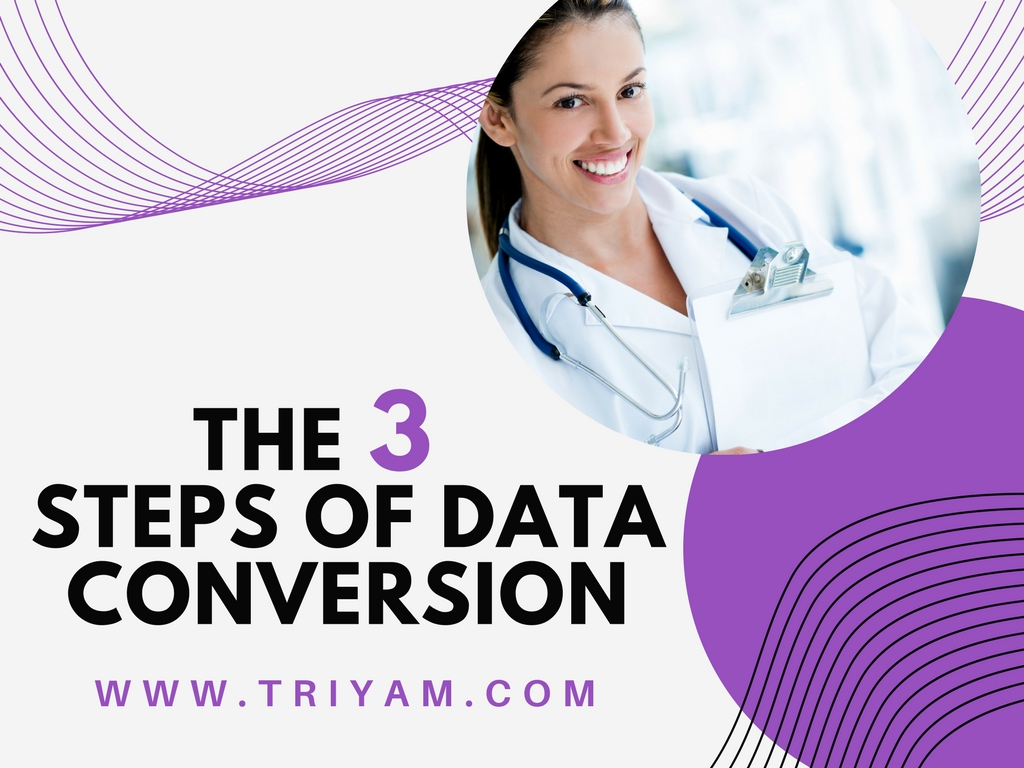EHR data conversion isn’t always easy to wrap your head around. After all, if you don’t work in the health IT field it may have never come up before. However, it’s a crucial part of any healthcare organization. This is why we at Triyam want you to understand what health data conversion is, as well as the process itself!
Let’s start with why you need it.
When a healthcare facility changes its EMR/EHR, all historical data needs to be moved or archived from the old system. Many states require that a healthcare facility maintain a minimum of five years of patient data. This includes clinical and financial history.
That’s where we come in.
Triyam facilitates the process of data extraction from the old EMR/EHR and helps convert this data into the new EHR or archive it in a vendor-neutral EHR data archive. This makes the data available to you in the new EMR or in Triyam’s own archival solution called ‘Fovea’. Fovea is an archival system for legacy data. However, we don’t just move and archive data. We also help define processes and tools to complete any pending activity, such as collecting outstanding receivables.
Three Steps of Health Data Conversion
In this post, we will discuss data conversion. In a subsequent post, we will discuss data archival. There are three steps to the conversion process. These three steps set you up for success with your new system and prep you for the archiving process.
Scope
Scoping is the process of defining the system that needs to be archived. This includes the volume of data, as well the methods of conversion and archival. We’ll discuss many aspects of your data during this phase to help us assess your needs, such as:
- Legacy system usage. What modules were used and in which years.
- Legacy system volume. Number of patients, visits, records per visit etc.
- Extracting the data. For example, will it be discrete data, documents and reports, or a combination of both? Many times the destination of the archived data decides the method employed. For example, Fovea archival system may be the destination of the extracted data. Sometimes the new EHR will be the destination of archived data. In those cases, the new EHR vendor will give specifications about the format in which they want the data imported into the system.
- Available access to extract the legacy data. Database access, industry standards interface access, application user interface access etc.
After documenting the scope, the data extraction from the legacy systems will commence.
Extraction
First, we do a sample data extraction. This is provided to our customers for verification before we continue with the full extraction. A typical sample consists of around 10 patients’ medical and financial data. This will include all of their visit information, as well as discrete data elements and documents.
Once the customer has reviewed and approved the sample extraction, the full extraction begins! Triyam follows a well-defined process. This process includes checks and balances, system testing, user testing etc. We then import all data from the original system into the new EMR, Fovea, or a combination of both.
Once we have extracted the data, it’s time to clean it up.
Cleansing
During the data extraction process, we provide clean-up recommendations. This includes how to remove duplicates, compress or summarize data, discard bad data, etc. We then give end users the opportunity to choose the data strategy that best suits their needs.
Once we are finished extracting and cleaning the data, you’re ready for the archival process. We will be covering this in our next blog post, so stay tuned!
What questions do you have about EHR data conversion that we didn’t answer here today? We’d love to hear from you!

